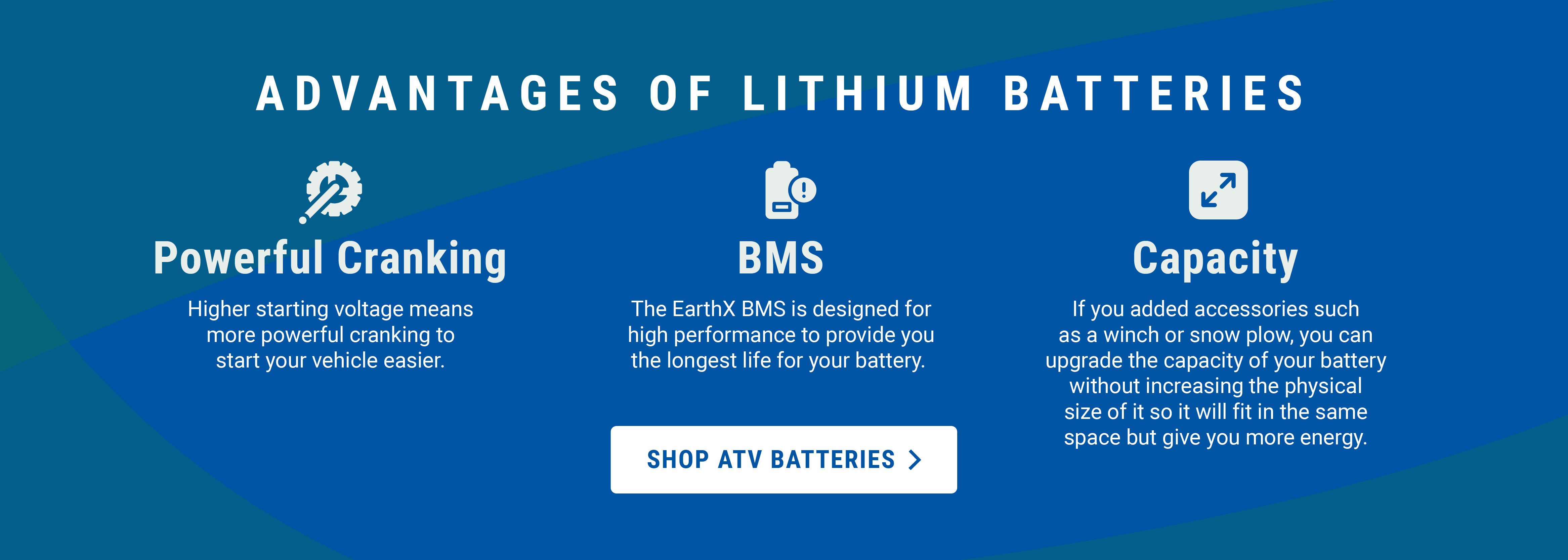The lead acid battery has been around a long time and is one of the oldest technologies still used today. It was invented back in 1859 and not much has advanced in the design, which is primarily composed of lead and sulfuric acid in a plastic housing. To put things in perspective, the first typewriter was invented in 1867; denim blue jeans in 1873; the telephone in 1876.; a record player in 1877; and the Wright Brother took to the skies in 1903 with the first fixed wing airplane!
The lithium iron phosphate chemistry battery, known as LiFePo4, or LFP, was first discovered as a better solution for many applications in 1996 but did not become commercially used until many years later due to how expensive it was, and the “common” user could not afford it. Of all the lithium battery chemistries, and there are many, the LiFePo4 chemistry is the most robust and safe available and close enough in voltage to be a replacement for a 12V lead acid battery.

Advantages:
- Upgrade Capacity. A lithium battery can provide more capacity than the stock lead acid battery that comes with your vehicle in the same provided space. If you have added additional accessories, such as stereos, winches, or plows, you might need to increase the capacity of your battery but you are limited by space. Or if you use your vehicle in extreme cold, such as an ATV with a snowplow, you can upgrade your battery to a higher cold cranking amp model but will still fit in your battery box location.
- Full use of the Capacity. As you use your lead acid battery as a power source, the voltage will immediately start to drop. At around 10V, most of your equipment will no longer operate. With a lithium battery, you can use 98% of it’s capacity (power) and remain above 11V so you have full use of all of it’s energy when needed.
- Weight. Approximately 80% lighter than a lead acid battery with the same CCA rating. Example, a very common Yuasa battery is the YTX20HL-BS battery used in street bikes. This is a 310CCA battery that weighs 15.1 pounds. The EarthX equivalent is the ETX36D, a 320CCA battery that weighs 3.9 pounds for an instant savings of 11.2 pounds. Weight savings is huge if you are a racer! Saving weight means better gas mileage, better handling, and better acceleration! The cost in light weight titanium parts is approximately $1,000 per pound, or would be over $11,000 to remove 11 pounds of weight on your UTV or ATV. You can do that for a fraction of the cost replacing your lead acid battery with an EarthX lithium battery.
- Higher resting voltage. A lead acid batteries starting voltage is typically about 12.4V. A LiFePo4 battery starting voltage is about 13.28V. For a starter battery, this is a huge improvement and will quickly and easily start your engine.
- Low rate of discharge. Depending on the lead acid battery, you can lose up to 30% of your charge on a battery per month. A LifePo4 battery will lose between 1-2% charge per month. This means that your LifePo4 battery can sit for an entire off season and still have plenty of power to start your engine when you are ready to ride. (if you have a vehicle that drains the battery, even when turned off, disconnect the negative battery cable for storage so you do not actively drain the battery).
- Battery management system. You can not install a BMS board inside a lead acid battery to monitor its health and prevent abuse to the battery inadvertently. EarthX has some models that even have an LED light on the battery that will “alert” you to something outside of normal. (Please see the EarthX Manual for full details on the functions the BMS provide). The number one killer of a battery is letting it discharge too low. The EarthX BMS will disconnect the drain in the event you left something on so you do not “kill” your battery.
- Environmentally friendly. The EarthX battery will not freeze, boil over, or have sulfuric acid corrosion on the terminals or on the inside on the lead plates. You will never have damage done to your vehicle by leaked or spilled acid.
- Longevity. The life span of a properly maintained LiFePo4 battery will be 2-3X longer than a lead acid battery.
